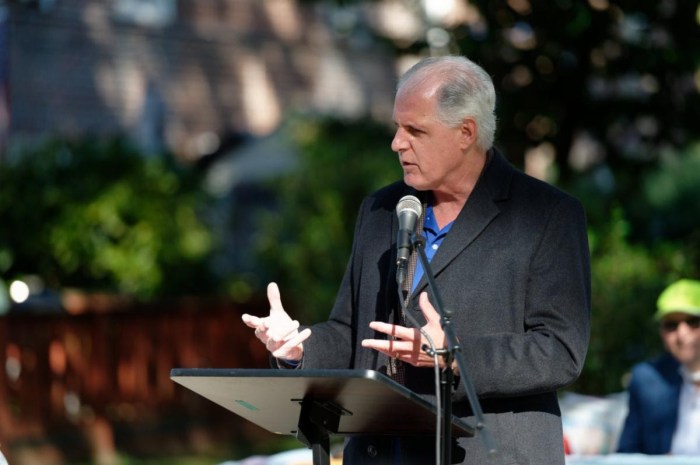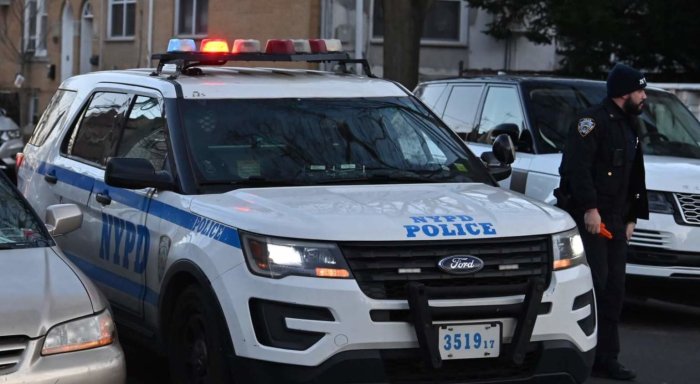Activists: Pollution Was Too Much
After repeated problems with smoke and high levels of air pollution, New York City has suspended the burning of downed trees and vegetative debris that remain from Hurricane Sandy.
A federal contractor had been burning the debris in open air burners at Floyd Bennett Field in Brooklyn.
Despite objections raised by environmental and public health advocates, the city Department of Environmental Protection (DEP) granted a variance from its own air pollution regulations last December to allow the burning to take place in so-called “air curtain burners.” The state Department of Environmental Conservation (DEC) also issued a letter saying that for this operation it would not enforce the state’s ban on open burning.
Under the conditions of the city’s variance, the burning could have continued through mid-April.
The groups had called on the U.S. Army Corps of Engineers, which is responsible for overseeing debris management from Hurricane Sandy, to aggressively pursue non-incineration options for the wood waste, which can be chipped and used for mulch and other purposes without emitting harmful pollutants.
The major concern raised by advocates was that smoke and fine particulate matter from the debris burning would worsen air quality in an area that is already suffering from poor environmental conditions in the wake of Hurricane Sandy. These concerns proved to be well-founded.
According to the U.S. Environmental Protection Agency, which set up air monitors around the perimeter of the site, air pollution levels in the vicinity of the burners exceeded the fact that a “public health emergency” was declared after Hurricane Sandy to use “emergency” exceptions to air pollution regulations that are designed to protect public health.”
“It was obvious from the start that burning massive quantities of wood 24/7 with virtually no pollution control was a bad idea,” said Laura Haight, senior environmental associate. “These air curtain burners are little more than dumpsters with fans. The city officials wanted to believe they would work, despite evidence to the contrary, and the Army Corps didn’t want to change its practices. We hope that a lesson has been learned here.”
“The combustion of this debris led to high levels of particulate matter, a major lung irritant linked to asthma attacks, heart attacks and even premature death,” said Jeff Seyler, CEO of the American Lung Association of the Northeast. “We are glad that the city has given up on this misguided plan and that residents downwind can now continue rebuilding from Sandy without this additional air quality concern.”
“Burning woody debris has never been an effective or safe way to facilitate storm clean up in NYC,” said Roger Downs, conservation director of the Sierra Club Atlantic Chapter. “We are encouraged that all parties now agree proper processing and reuse of tree limbs and vegetation, in the form of wood chips and mulch, is the best pathway forward to improve air quality and reduce greenhouse gas emissions.”
The groups had high praise for the EPA for conducting air monitoring on the site and for posting the data on its webpage. A description and timeline of the burning can be found at: www.epa.gov/sandy/response.html.
“The EPA’s efforts to keep the public informed about the burning operations at Floyd Bennett Field, monitor their impact on air quality, and make all data public stands in stark contrast to the DEP,” Kupferman said. “We’ve had to send multiple Freedom of Information Act requests to access DEP’s monitoring data, and still have not received most of it.”
The groups also praised City Council Member James Gennaro, chair of the City Council Environmental Protection Committee, for exercising his oversight responsibility.
Other groups that opposed the burning included Citizens’ Environmental Coalition, New York City Environmental Justice Alliance, Citizens Campaign for the Environment, Coalition Against the Rockaway Pipeline (CARP), New York Climate Action Group, and the New York Committee for Occupational Safety and Health (NYCOSH).



































